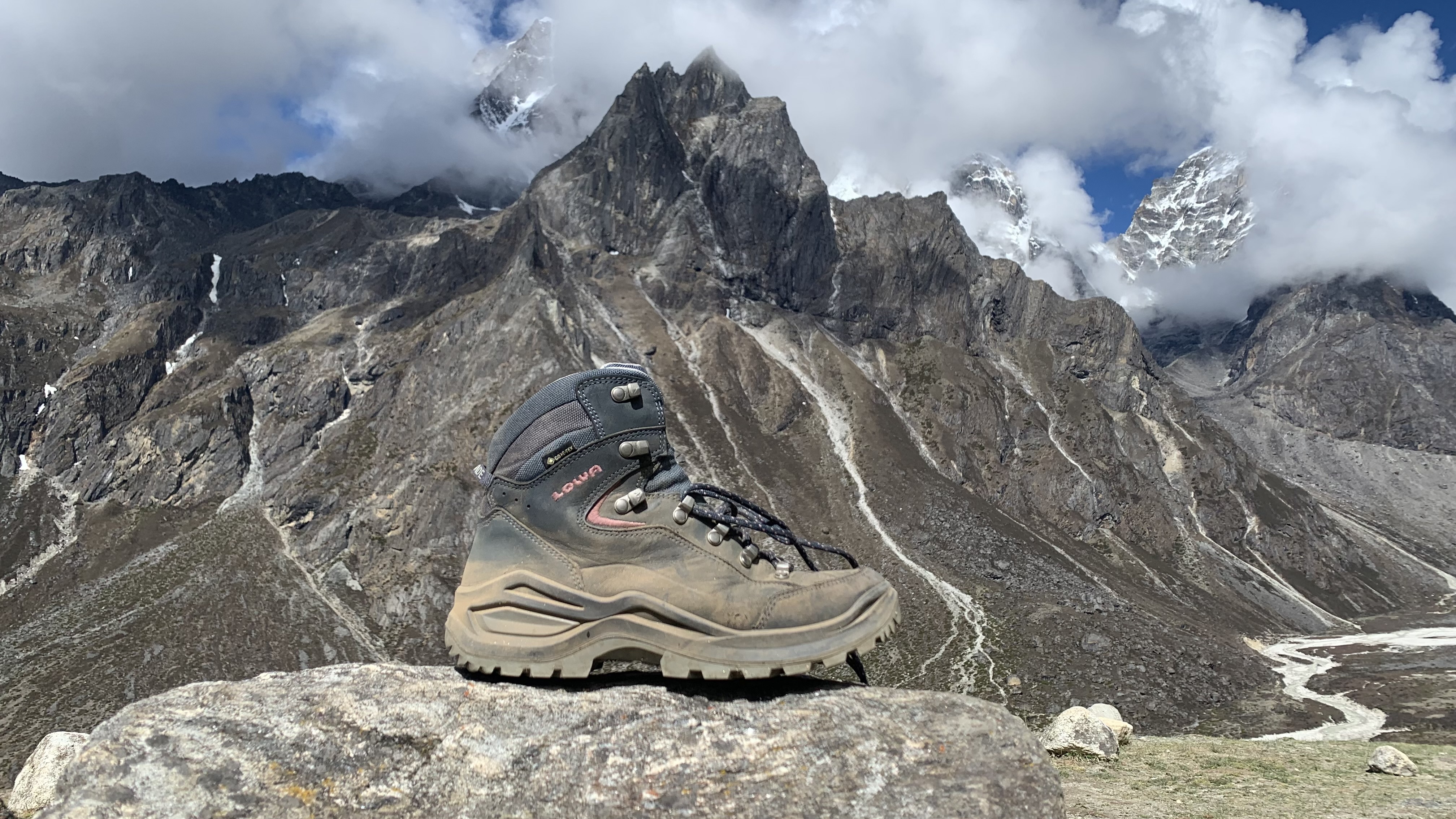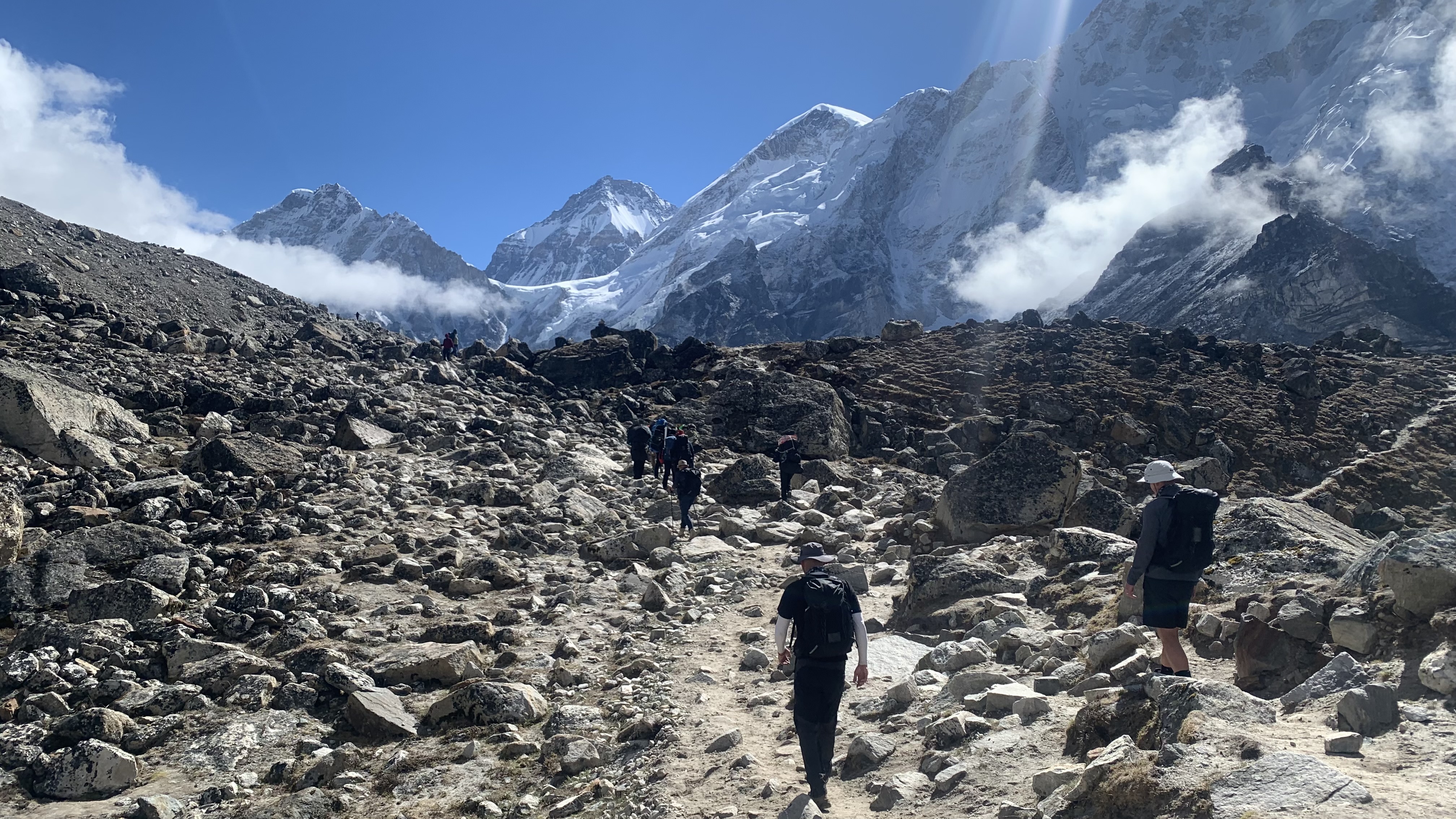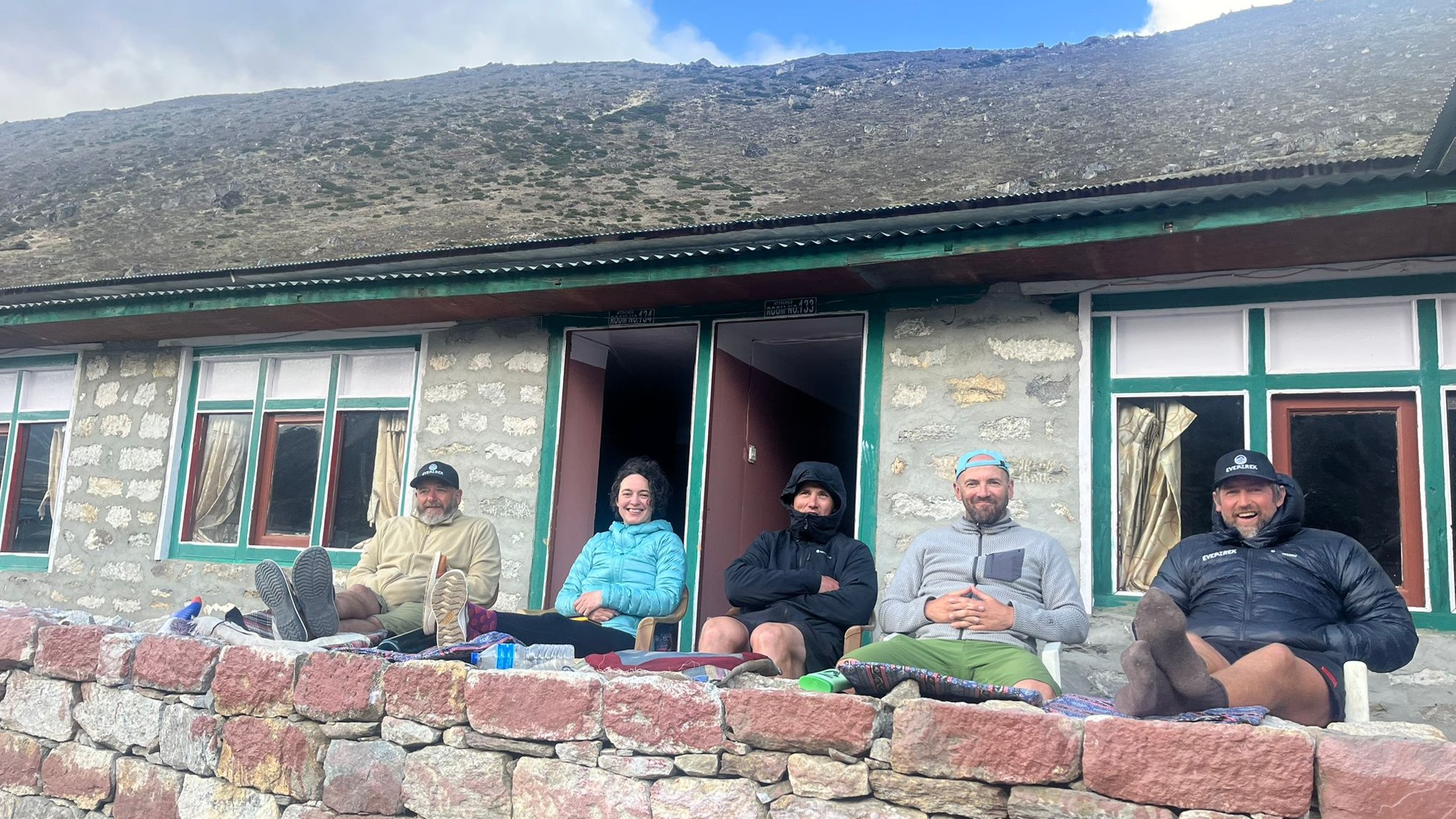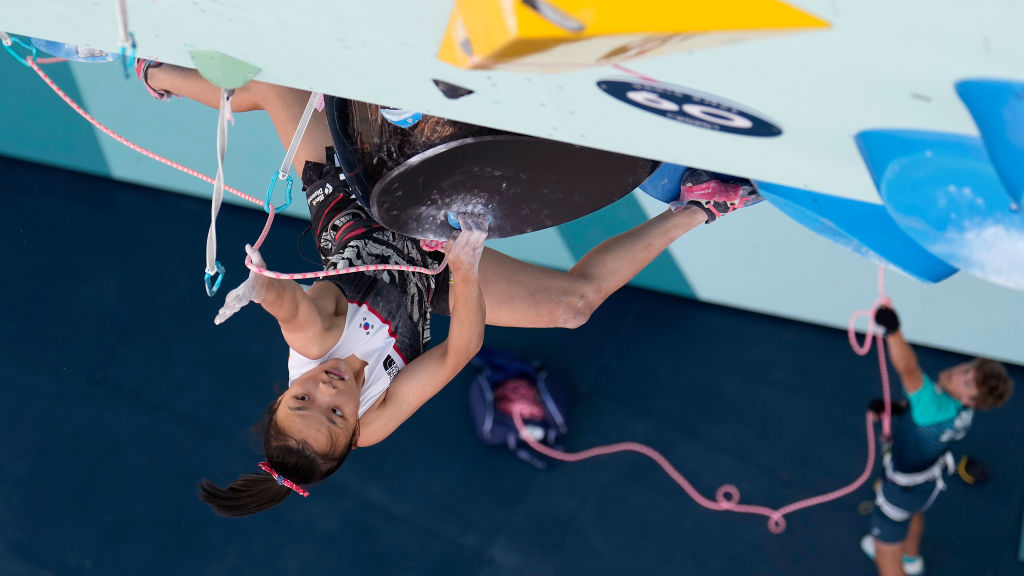The trek to Everest Base Camp seems daunting, but with these 7 tips, tricks and takeaways, you can make it easier – and more comfortable
My trek to Everest Base Camp was a big success – here’s my advice for a comfortable trip

I love putting myself in situations that squeeze me beyond the comfortable: rappelling into a Utah slot canyon and navigating a subterranean maze, riding my bike solo for 80 miles over four Colorado high mountain passes, trekking to the world’s highest base camp over 11 days with four strangers. Strenuous adventures, especially long ones in remote areas, always provide opportunities to examine how you respond to a challenge, and usually show you just how tough you can be – plus there’s loads to learn along the way.
The trek to Nepal’s Everest Base Camp isn’t technical and doesn’t require crampons or mountaineering experience, but it can still feel daunting. There’s the elevation to contend with – at 17,598ft (5,354m) above sea level, it’s higher than nearly every mountain in the US, plus Mont Blanc, Rainbow Mountain, and many Himalayan peaks. That means that by the time you arrive, you’re getting 50 percent less oxygen with every breath than you would at sea level. And that’s enough to turn a substantial number of trekkers back before reaching Base Camp.
It also involves a long journey. We took the 11-day option, which is one of the shorter routes, and still walked for about six hours a day. You’ll sleep in teahouses, but you won’t have the same access to hot showers, clean drinking water, and charging your phone that you might back home.

Like a lot of trekkers, I had my moments of struggle, which you can read about here, but I’d consider my trek to be a success. I managed every step, never got a blister or threw a tantrum, and after 11 days only felt stronger. That's thanks in part my guides at EverTrek. The trekking company is based nearly 5,000 miles away from Everest, in Wales, and they’ve only been around since 2017, but they bring more people to Everest Base Camp each year than any other outfit.
Thanks to their expertise and the advice of our local guides on the trail, I learned loads of tips and tricks to bring this extreme adventure into reach and even make it more comfortable. Following are my main takeaways – informed by my experiences and those of my teammates – to help you trek to Everest Base Camp.
1. Train hard
“There’s just no hiding from the fact that you have to get the steps in,” said Rhys David, CEO of EverTrek, as we stood outside our teahouse in Lobuche, catching our breath.
We’d been walking for a week over rough ground and, according to my Garmin Fenix 8 watch, had already covered over 16,000ft (5,000m) of ascent. That’s more than climbing to the summit of Everest from Base Camp, and more than climbing Mont Blanc from sea level.
All the latest inspiration, tips and guides to help you plan your next Advnture!
I’m not telling you all this to put you off; as David says, the trek is “80 percent very accessible, 20 percent very difficult,” which are quite good odds – but only if you put in some significant mileage in on foot in the months before you set off.
Even if you’re in peak condition, assume the trek will be tougher than you expect and train hard. One of my teammates, Jonathan "Fox" Davies, only recently retired from an 18-year professional rugby career. That’s nearly two decades of top-level training, never mind the fact that he’s seven years my junior and trained seriously for this trek. Compared to the rest of our group, he made it look easy, but when I asked him, he admitted it was anything but.
“Definitely hard. I’ve done steeper climbs and hikes that have taken one or two days, but the unforgiving nature of this has been tough.”

2. Get your gear right
For the first few days, we were joined by EverTrek founder Andy Moore, who first trekked to Base Camp a decade ago and has learned a few things over the years about how to do it well. I asked him which single piece of gear he recommends all aspiring trekkers think hard about, and he was unequivocal in his answer:
“Walking boots are probably the most important thing because if you mess your feet up, you’re going to struggle.”
There are a few non-negotiables when selecting hiking boots (or shoes) for this trek, such as good traction and a waterproof membrane, but beyond those criteria, what you choose to walk in is really a personal choice.
Myself and David have, independently, both opted for the new Lowa Renegade Evo GTX Mid boots for the trek. I love them because they offer a really good level of protection but still provide some trail feedback, and my feet never feel tired or sweaty in them. Elsewhere in our group, footwear runs the gamut from modern classics (Merrell Moabs and The North Face Hedgehogs) to big and bouncy (Hoka Kaha 3s) and even lightweight trail running shoes, in this case the Hoka Speedgoat 6s.
Whatever you settle on, get a lot of miles in them beforehand – I walked over 100 miles in my boots before I even boarded the plane to Kathmandu – to be totally sure they’re the right choice.
And while you’re breaking in your boots, make sure you test out your other gear too to ensure everything fits properly, is adequate and comfortable and you know how to use it.
“Use your equipment whilst you're training, you don’t want to show up and use your trekking poles for the first time on the trip,” cautions Moore.

3. Slow down and look around
When the trail is steep and the days long, it can be easy to shift into autopilot: dig in, one foot in front of the other, and get it over with. But that’s how you can miss out on some of the natural splendor.
“As you go up the valley, you don’t want to have your head down just trying to get oxygen into your lungs. You want to enjoy it,” advises Davies.
To do that, you have to slow down. Fortunately, we’re paced by Vikram, a local guide who brings up the front of the group, but if you have a choice or control over your speed, choose a low gear. This will help you to acclimate to the increasing altitude, and keep you tuned in to your surroundings.
Walk mindfully and accept every opportunity to sit down and take a water break or stop for tea or coffee at one of the villages where patios are often constructed for you to take advantage of the views. If it’s cloudy, and often it is by the afternoon, the surrounding peaks only make brief appearances, and you want to be ready for them because you never know what’s behind the next passing cloud.

4. Go with a reputable trekking company
Almost every day on our trek started the same way. We packed our duffel bags and three porters began carrying them to our next stop while we had breakfast. Our lead guide Sailesh briefed us on the day ahead while the team filtered water so we had plenty for the trail, then we started walking by 7.30am.
With Vikram up front, Sailesh brought up the rear to make sure no one got left behind. He was always communicating with the other guides and porters, answering our questions and doing whatever it took – even the occasional well-timed song and dance – to help get us up the trail with spirits intact.
It was a big team, and there’s no getting around the fact that that level of service is going to set you back a bit of cash – EverTrek is one of the pricier trekking companies – but it meant that there was always plenty of support available.
The cost of cutting a few corners and taking a more budget-friendly approach could mean you’re less comfortable (you might, for example, have to carry your own gear) but it could also be dangerous if you’re not able to communicate easily with your guide or they don’t have the resources to keep your group together. We always felt safe, and that’s a big deal in such a remote place.
“You go into these mountains and they’re dangerous places, and you want to trust that you’re going to be okay,” says Moore.
A reliable company doesn’t just help you during the time that you spend on the trail – it means you have access to better lodging and can navigate the chaos of Lukla airport at the end of your trek.
“The engine works in a particular way in Nepal, and the more contacts your guides have, the better,” says David.
And, he adds, it means we don’t have to worry about plans and logistics: “You can just focus on putting your rucksack on, getting out in the morning and walking.”

5. Follow the leader
If you’ve chosen a good trekking company, you should be furnished with great local guides – assume they know their stuff and follow their direction and example at all times.
Sailesh was a bit of a rockstar guide, with excellent English, boundless energy and extensive mountaineering experience. He could name every peak and take care of practical details too, constantly reminding us to drink more water, eat even when we weren’t hungry (a common altitude response), and steering us away from dodgy food choices (mainly meat and milk as we got further along the trail).
As the days went by, I realized how important it is to do what your guides do, and not just what they say. If our guides were wearing their waterproof jackets when we met in the morning, I pulled on my Arc’teryx Beta AR and assumed it was going to be either wet or breezy. If they had their neck gaiters pulled up over their faces, I figured the trail was extra dusty and did the same to protect my lungs from the dreaded Khumbu cough. I learned to order Dal Bhat at the teahouses, the national dish of Nepal that Sailesh explains is an excellent source of nutrition, and to step to the uphill side of the trail to let herds of yak pass so I didn’t fall.
As Moore says, no matter where you are, “Local knowledge is the best thing in the world.”

6. Revel in the downtime
There is a flip side to the physical toil of trekking to Everest Base, and that’s a tremendous amount of downtime. Most days, we arrived at our teahouse before 3pm, and from then on, the schedule was open.
At some stops along the trek, like Namche, Pheriche, and Lukla, you’ll find villages with cafes, bars and things to discover, but mostly, once you get to your teahouse, you’re looking at hours of downtime. I can’t emphasize this enough: enjoy it.
If your regular life is a whirlwind of lists, demands and obligations, 6–8 hours of downtime before bed might feel more torturous than all the walking. We’ve built our society around perpetual stimulation, so switching it off can be hard, but as far as I can tell, nothing in the evidence suggests all this busy-ness is any good for us. Short of finding a new planet to live on, this trek is the closest thing I’ve been able to find to a total nervous system reset.
“You have time to think about things and process things,” says Davies.
You’ll probably be able to access WiFi as long as the weather is good, but after sending a message to your loved ones with an update, set the phone down and enjoy the simple life. I plowed through three novels on the trek and kept a daily journal. My teammates and I spent hours playing card games, growing friendships and listening to music, and while I can’t prove it, part of me thinks this was better for us than the actual hiking.

7. Build in time at the end and treat yourself
Though you might be able to grab a freezing cold (or scalding hot) splash along the trek, most of your bathing will be done using wet wipes, and you’ll definitely feel pretty grimey at the end. I can’t imagine anything worse than flying back to Kathmandu and checking into a backpacker’s hostel, or worse, hopping directly on the long flight home.
We built in a few days in Kathmandu at the end of our trip, and even though we were keen to get home and see our loved ones, it was the best way to come down from the incredible high of the trek. We booked into a five-star hotel and I’ll think about that first long, hot shower fondly for a long time, never mind the new appreciation for the luxuries of air conditioning, buffet dinners, and a full-service spa.
Does it add a little extra expense and vacation leave to an already pricey and extended trip? Sure, but at this point, you’ve been well-squeezed from your challenging experience. It’s time to enjoy the juice.
Julia Clarke is a staff writer for Advnture.com and the author of the book Restorative Yoga for Beginners. She loves to explore mountains on foot, bike, skis and belay and then recover on the the yoga mat. Julia graduated with a degree in journalism in 2004 and spent eight years working as a radio presenter in Kansas City, Vermont, Boston and New York City before discovering the joys of the Rocky Mountains. She then detoured west to Colorado and enjoyed 11 years teaching yoga in Vail before returning to her hometown of Glasgow, Scotland in 2020 to focus on family and writing.

